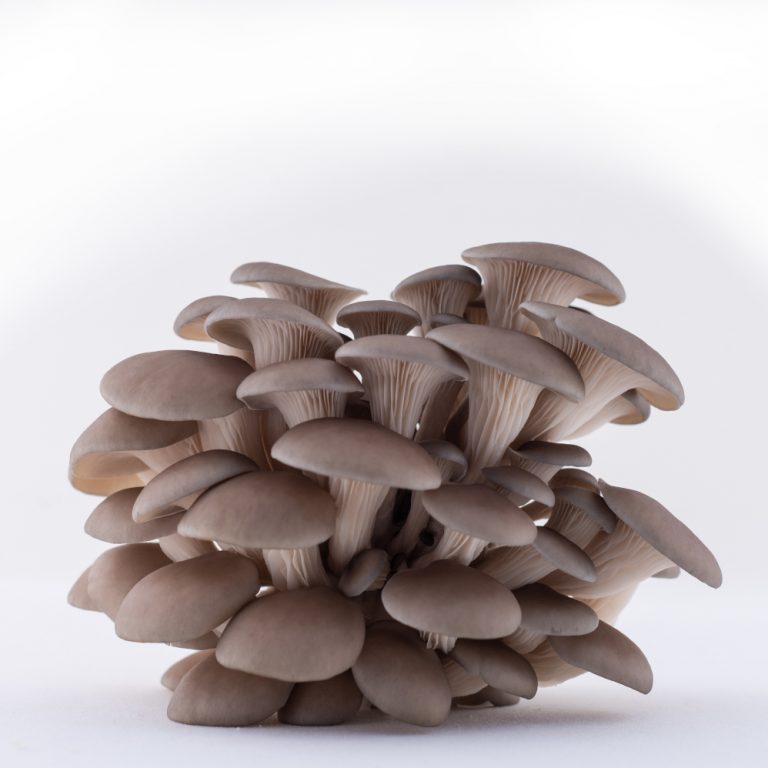It’s not every day that Rene Redzepi, a world-renowned Michelin-star chef from Copenhagen, takes note of Alberta mushroom producers, but Gruger Family Fungi in Nisku has been churning out edible mushrooms that the culinary community has been praising since the company started in 2015.
Chef Calvin Teufeld of Rub’d Smokehouse BBQ noticed Redzepi was remarking on the unique roast-chicken flavour that certain oyster mushrooms took on when baked in the oven. So, Teufeld decided to have a little fun on social media with pink and yellow oyster mushrooms supplied by Gruger Family Fungi.
“Hey chef, our mushrooms taste like bacon when they’re cooked!” he wrote. To Teufeld’s surprise, Redzepi liked the photo, and the two chefs enjoyed a mutual understanding of the beautiful meat-like qualities that cultivated mushrooms take on when they’re skillfully prepared.
Mushroom naysayers admittedly have a leg to stand on when they’re dismayed by the supermarket variety cremini and button mushrooms. The anti-fungi crowd surely grows each time mushrooms are served soggy and chewy at the dinner table, but chefs, home cooks and the Gruger family understand that mushrooms can be so much more if each variety is adequately cared for in the kitchen.
Pink oyster mushrooms can become meaty and laden with umami if they’re baked in the oven, just like bacon. Pan-fried lions mane mushrooms adopt a tender, delicate flavour that mimics seafood or crab meat. For owner-operators Rachel and Carlton Gruger, preparation and planning are essential for unlocking the full potential of a mushroom, and especially when it comes to cultivating them.
“They will communicate amongst themselves to fruit at the same time, and that is quite unique,” says Carlton. The mushrooms need to be allowed to fruit, rest and fruit again two to three times over in temperature-controlled rooms. Cultivating fungi requires extensive handling over a period of months, with certain batches being handled up to 50 times before they’re ready for consumption. The science needs to be exact, which is something that’s easier said than done when their primary sources of mushroom research are published in Mandarin Chinese.
